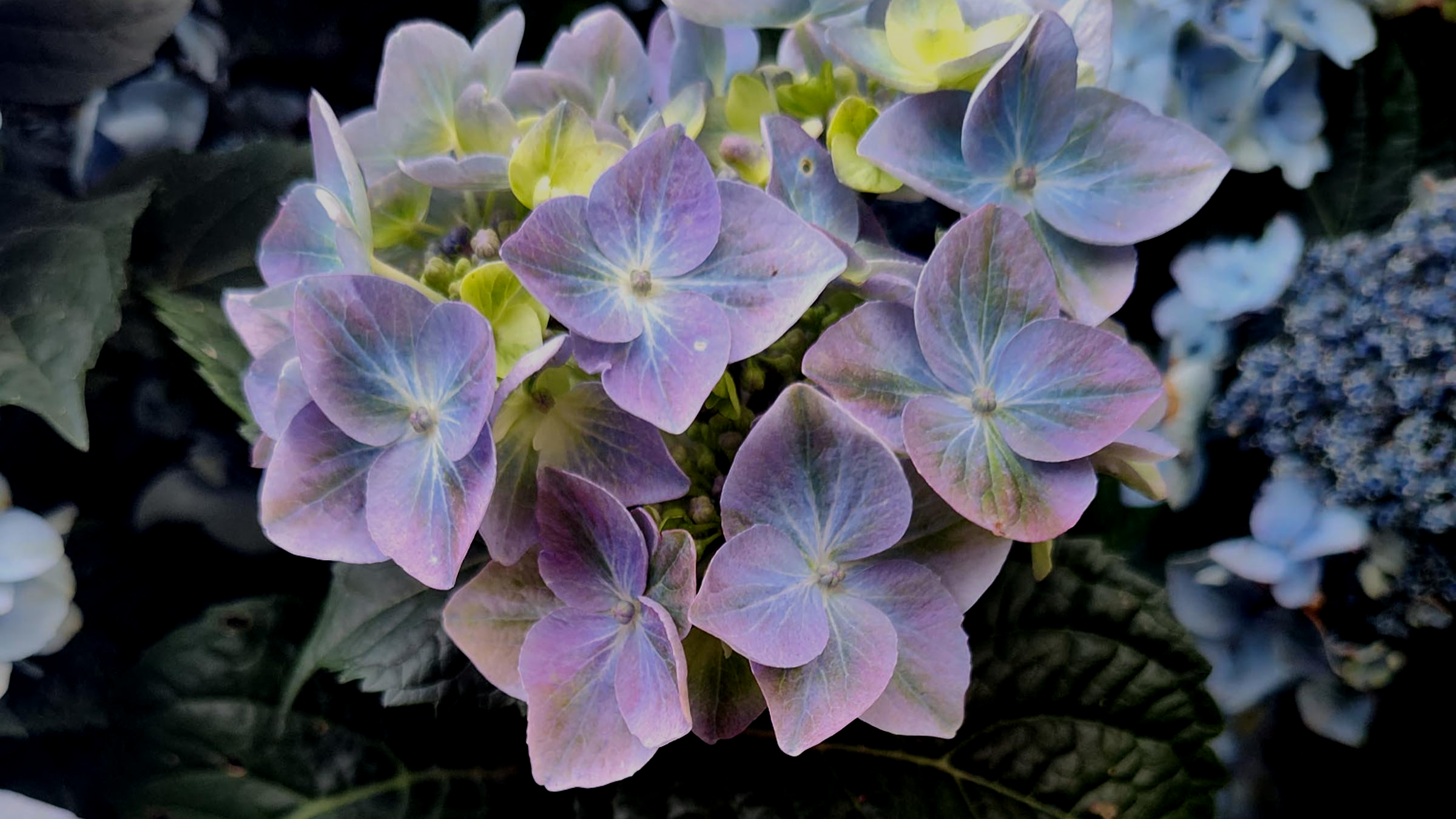I am sure many of you, like me, are battling the seemingly endless procession of rabbits invading your garden. In my landscape, the cute little furry destructors are there every morning to send me off to work, and then there to welcome me home. The main perpetrators are usually the Eastern Cottontail specie, ironic since they don’t even belong here, being introduced in the 1930’s to our region as game.
During the growing season rabbits may nibble on just about anything, but the snacking will continue throughout the winter. This time of year they turn my pansies into sorbet, nibble on the base of my woody shrubs and trees, and of course there is always the haphazard attempt to mow my lawn - if I could only train them to cut it evenly, and on a regular schedule. All of this feeding leaves little piles of rabbit “treasures” everywhere - it is honestly amazing how many little greenish-brown “jellybeans” (as I call them) they produce. All joking aside, the fresh poop is actually appreciated, as it is not “hot manure” and has no danger of burning my grass or other plants. I will take the free organic fertilizer without complaining, but again Mr. Rabbit, can you please spread it more evenly in the grass and be sure to leave extra around the plants that may need a little more? Wishful thinking on my part, for sure.
There are plenty of things they do not like, and certainly a few plants that I would term “rabbit proof.” To me, one key is always having a variety of things planted and to focus on things they avoid in key areas, say the vegetable garden for example. Many of the plants they tend to avoid share common traits, including fragrant foliage, often greyish color (not as much green), and non-smooth leaves – think pubescent, oily, or textured foliage. The ultimate rabbit resisters are Lavender and Rosemary as examples, but many others work just as nicely. A little research will show you there are a number of great lists available from various organizations that are trying to help us all avoid rabbit damage.
Typically with wildlife (yes, this would include deer as well) a multi-pronged approach is needed. There are some useful practices to consider and some helpful organic repellents to utilize. Personally, I am not interested in trapping, killing or hurting the little guys - although at some point I may become red-faced enough to go Elmer Fudd and change my tune. I am more interested in encouraging them to go snack in my neighbor’s yard (sorry neighbors!) and leave my garden alone. Keep in mind as you consider incorporating any of the following tips into your personal battle plan, that there is never a one-answer-fits-all with animals - one thing works for me, another works for you and neither works for someone else. I have even had one practice be successful in one area of the yard and do absolutely no good in another. The point is try a few of these and keep trying more until Mr. Rabbit is under control and no longer using your landscape for daily breakfast, lunch and dinner.
Utilize fencing: Duh, right? Choose your fence wisely though, making sure it is metal, at least 3-feet tall, and buried into the ground (6-inch minimum at base). With existing fencing, be sure that there are no gaps and a flap at the base is added (as described above). Rabbits, believe it or not, would rather burrow under than hop over.
Add fragrance: There are smells our furry friends try to avoid; like onions, Irish Spring soap, hot peppers, garlic or even talcum powder. Try sprinkling some of these in problem areas or even plant some onions or garlic as a perimeter control in a garden patch.
Watch for nesting sites: The reproduction of the rabbit is legendary and if you can prevent them from starting a family in your landscape, all the better. Look for holes in the ground, under wood piles, spots under decks and porches, in piles of debris, and in taller grassy patches. They stay close to home, so no nest may mean no rabbits anymore.
Go vertical: It is easy to add more containers and raised beds to grow things in, keeping susceptible plants out of their reach and safe from potential damage.
Join the cloche revolution: Gardeners can find all kinds of these plant protectors and even have fun making them DIY style. From fancy metal types to simple plastic milk jugs and everything in between, these are often a practical way to protect seedlings or other valuable specimens.
Utilize predators: Certainly a dog that likes to be outdoors may help chase them off, but also remember NOT to discourage natural predators (like coyotes, birds, owls, hawks, eagles, etc.) from helping you out. Pet eagle perhaps?
Protect your plants in winter: If they are chewing at the base of woody plants (like in my yard), try using chicken wire to make yourself a little cage around the trunk/stems, burying the base into the ground to prevent them from getting under it.
Try repellents: Using organic repellents should be part of every battle plan, but remember to read labels, re-apply according to directions (especially in wet spring weather), and protect new growth at all costs.
Almost all gardeners will utilize repellents at some point, whether it be for the rabbit, a squirrel, or maybe even an armadillo - we are trying to repel by smell, taste, or optimally both. Common ingredients in these products should smell a bit, and sound like a concoction worthy of a medieval sorcerer. Delicious goodies like coyote urine, vinegar, coffee grounds, citrus juice, bone meal, blood meal, cayenne pepper, garlic, and clove oil are out there to help, but be careful of whole-egg solids. That is essentially the one precaution to keep top of mind… what can you safely use on edibles to then be able to eat safely. Anything with egg byproducts should not be used with edibles to eliminate any chance of Salmonella ingestion. Two great products to seek out are Rabbit Scram and Plantskydd (which works nicely with deer too), both of which are highly rated and effective in liquid or granular forms.
The battle with wildlife can be overwhelming at times, but seek help and utilize anything and everything you can on the garden battlefield. Ask advice from Certified Professional Horticulturists at your local garden center, allowing them to show you rabbit-resistant plant options, safe products that repel these critters, and practical techniques that will help you shield your plants. As always, I wish you garden success, much patience and may the force be with you on this one!



